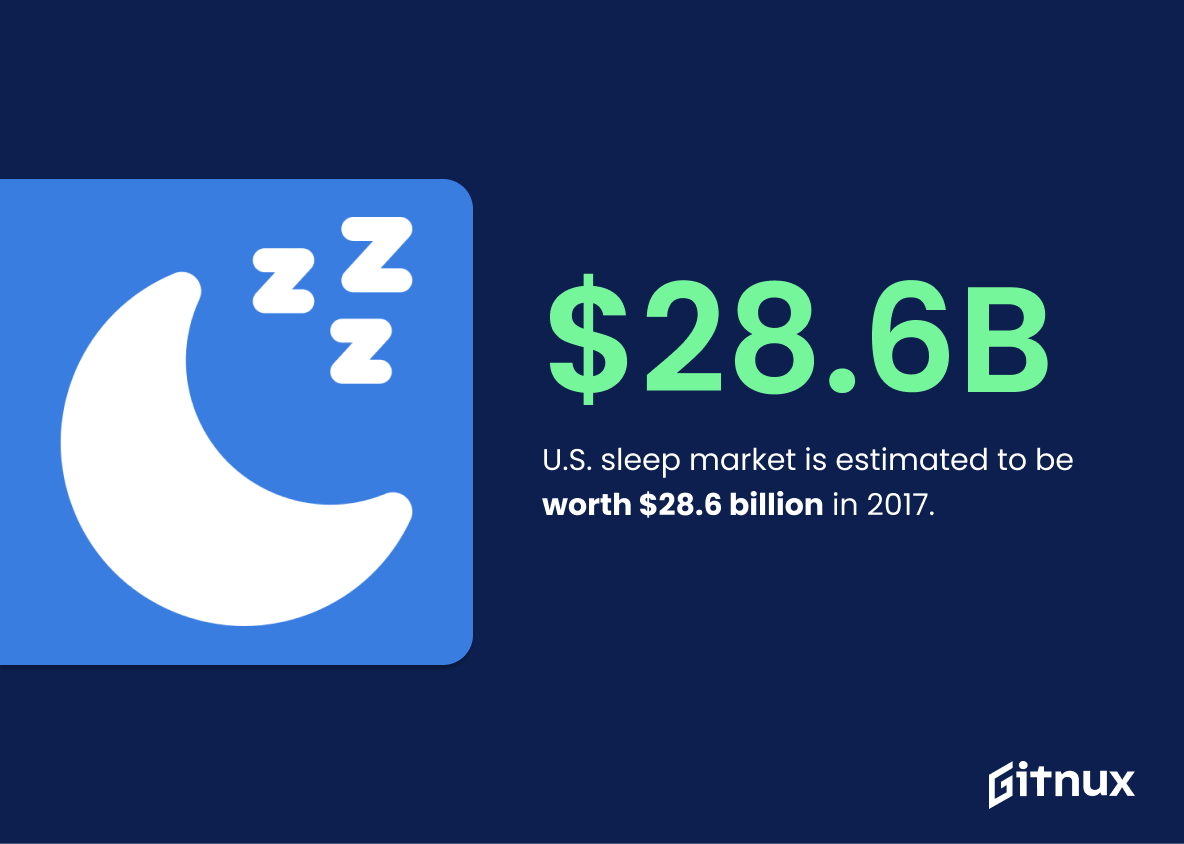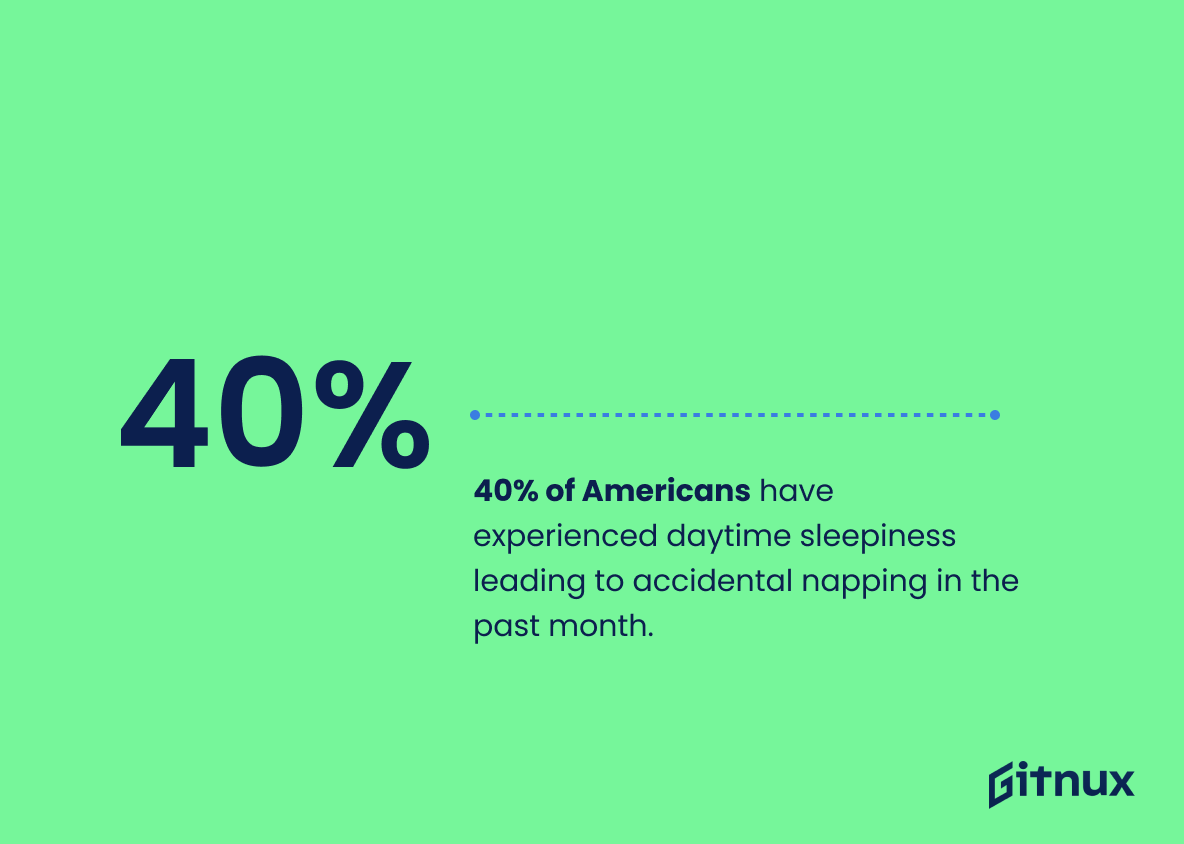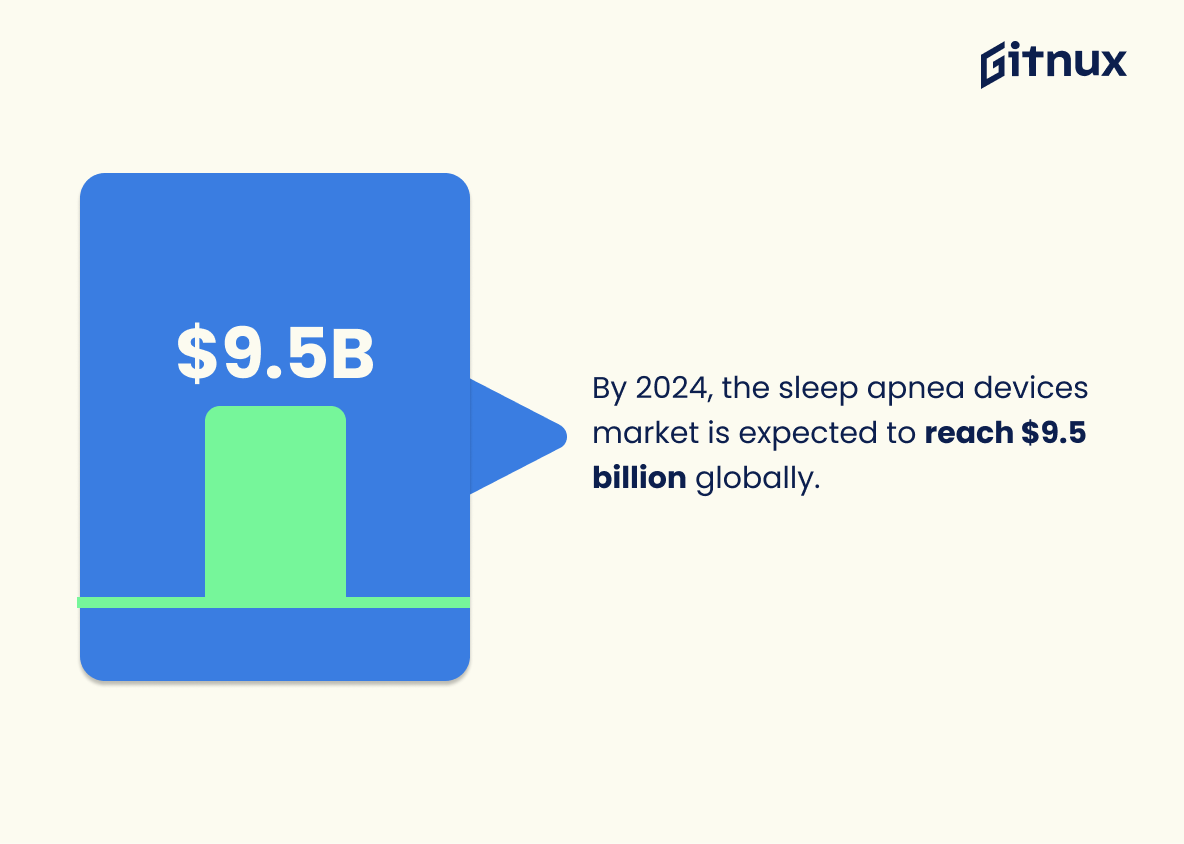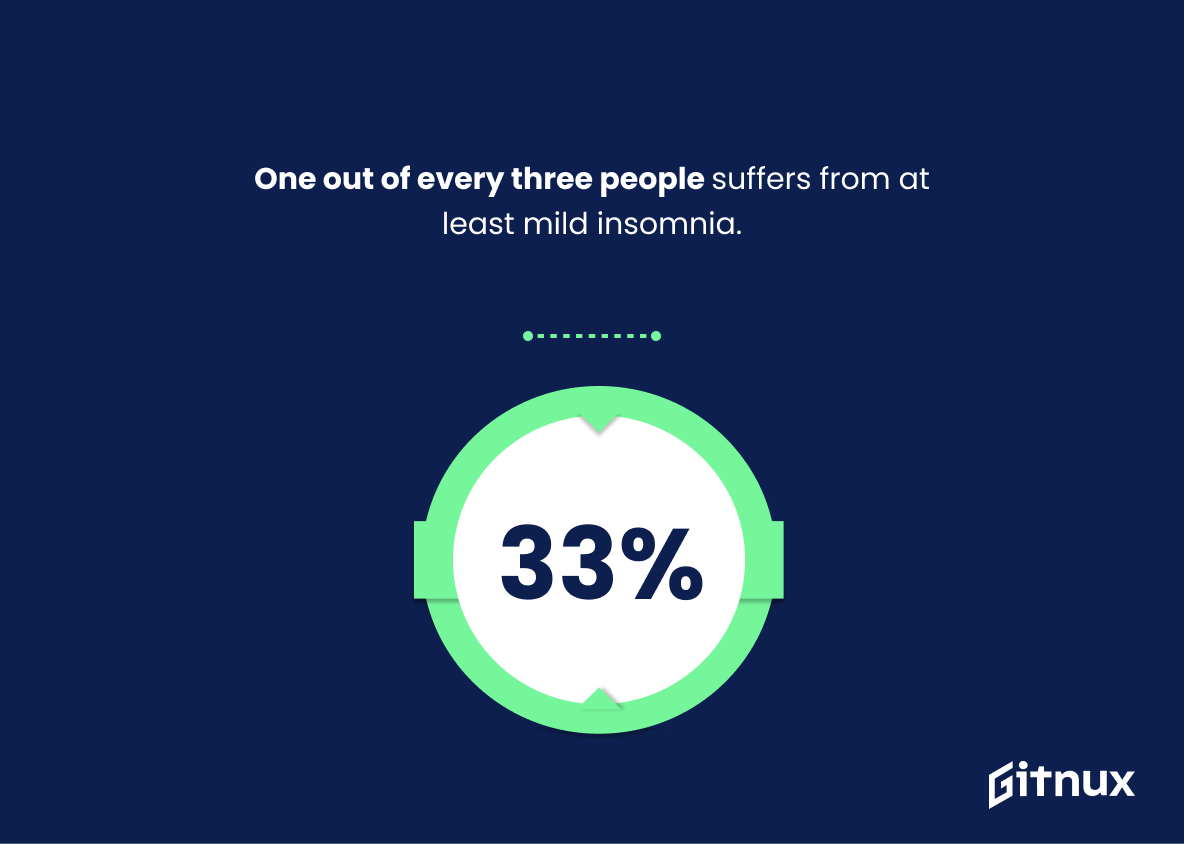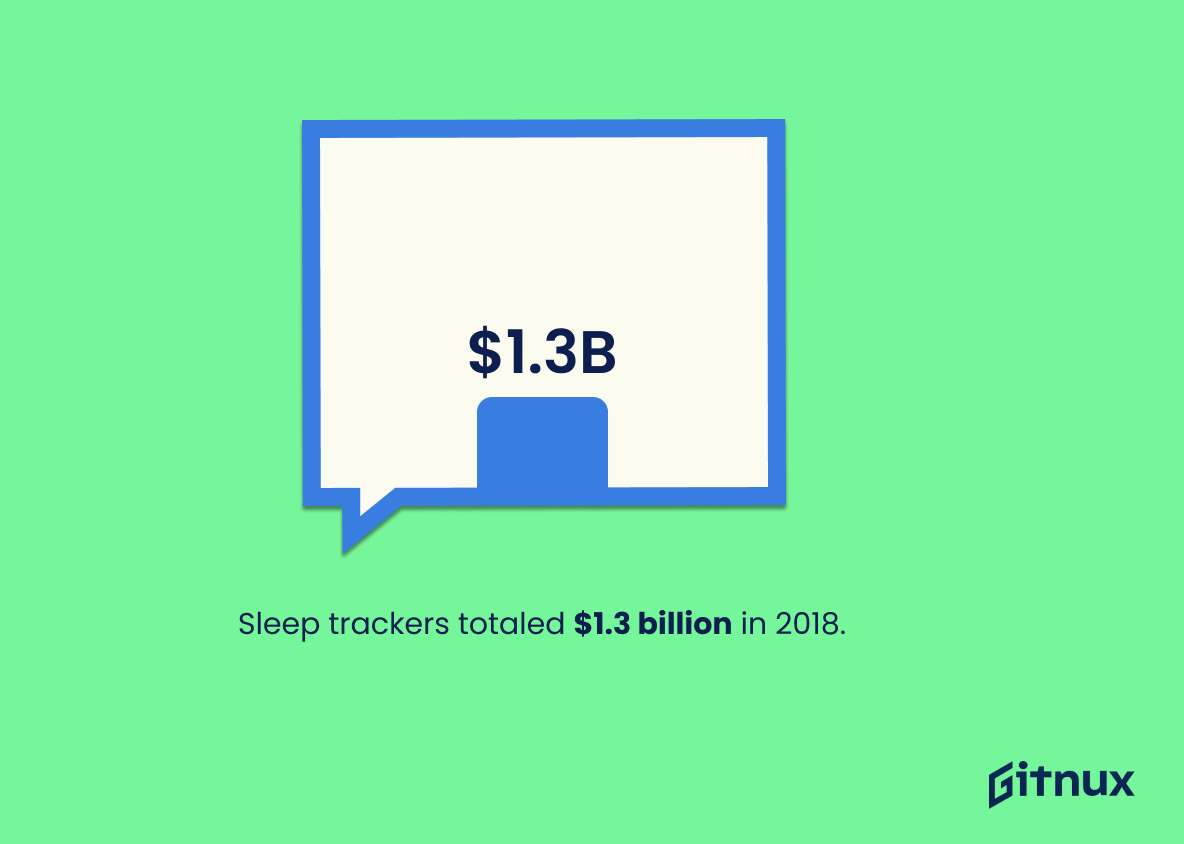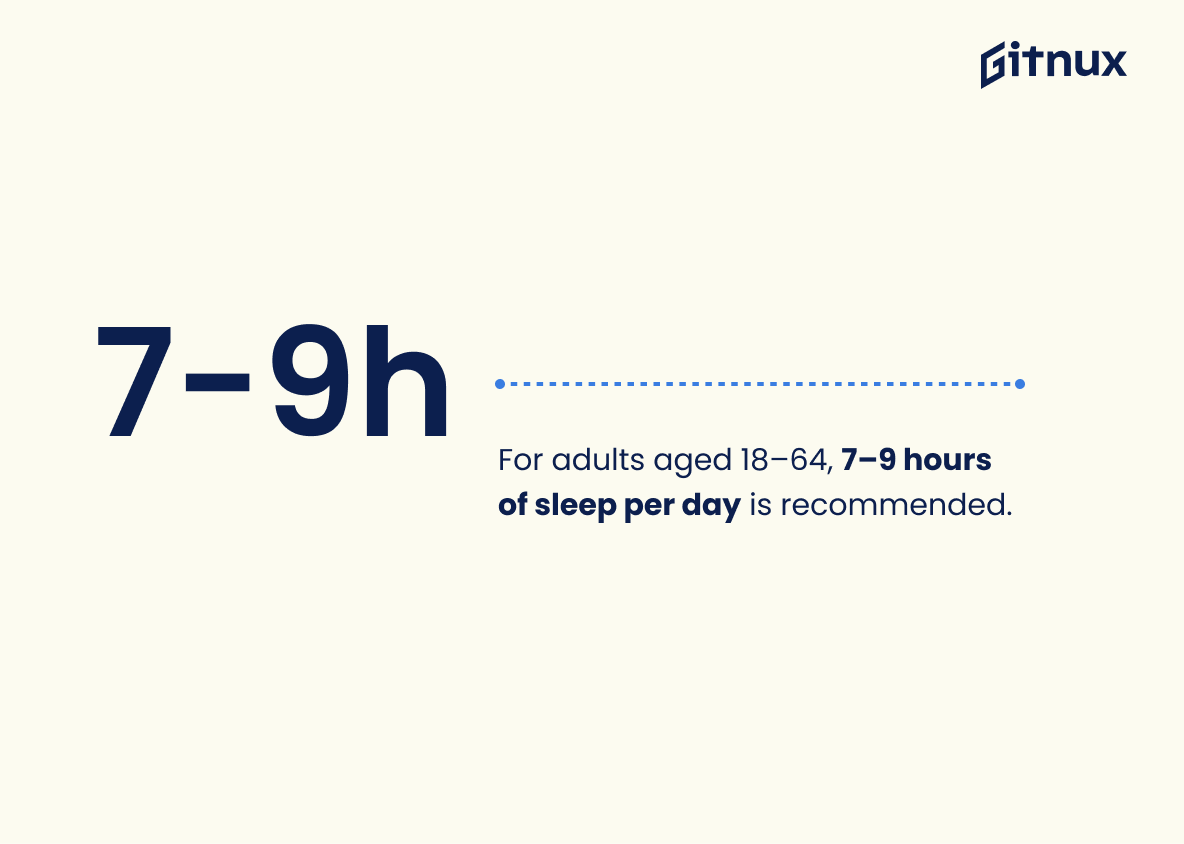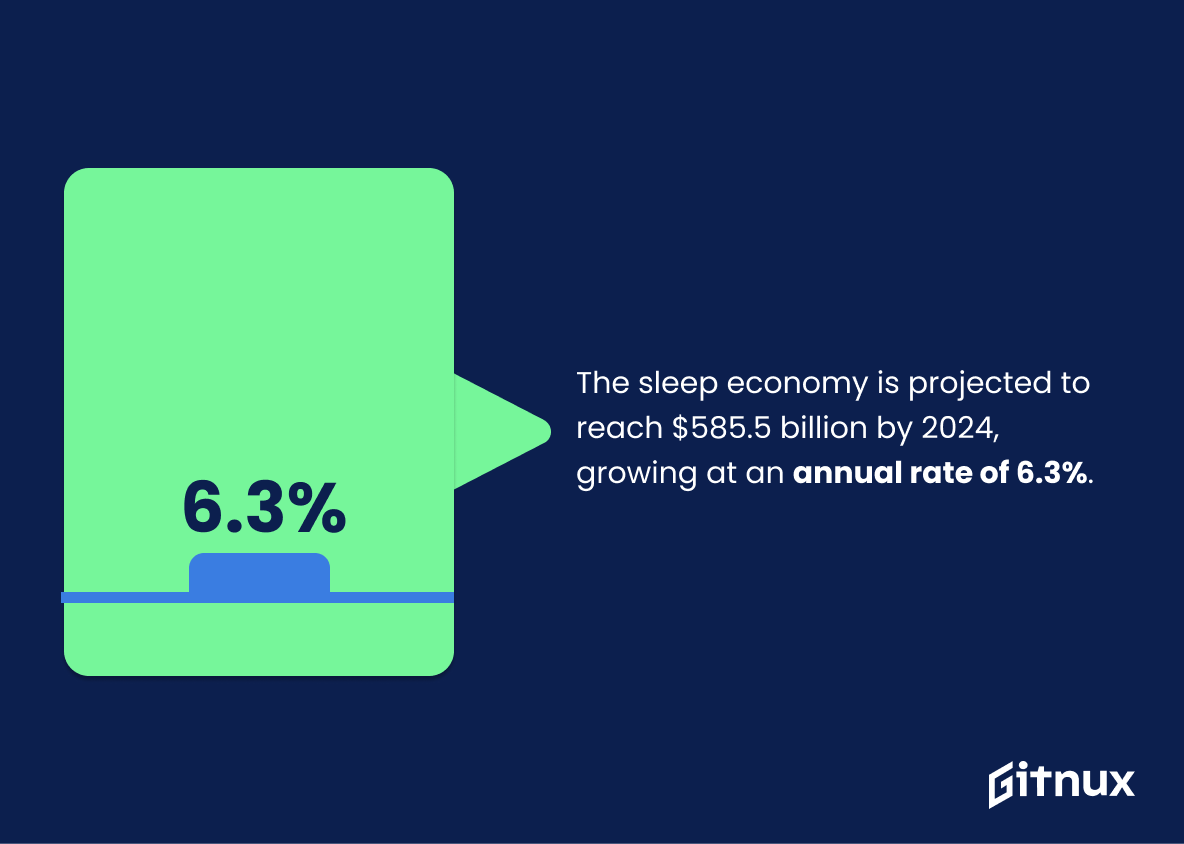As we dive into the intriguing world of the sleep industry, it’s fascinating to observe how it has evolved over the years, transforming sleep from a simple necessity to a health and wellness market segment all its own. Sleep, as mundane as it may seem, has a multifaceted industry built around it, encompassing a broad array of products and services designed to offer a better slumber experience.
This blog post will explore pivotal sleep industry statistics that impart insights into market trends, consumer behaviors, and the economic impact of this ever-growing sector. Join us as we unlock the analytical side of the world of sleep, offering you a deep-dive into how, why, and on what, individuals globally are spending for a good night’s rest.
The Latest Sleep Industry Statistics Unveiled
U.S. sleep market is estimated to be worth $28.6 billion in 2017.
As we embark on a journey to the heart of the Sleep Industry’s realm, we encounter a jaw-dropping revelation: a glittering, $28.6 billion treasure trove attained in 2017 in the U.S. sleep market. This colossal figure, more than just a number, serves as a mirror reflecting the economy’s beating pulse, the growing interest and emphasis on sleep health, as well as the burgeoning enterprise opportunities ripe for the picking.
The statistic, serving as our compass, directs us to new avenues of exploration, from studying consumer behaviours to forecasting industry trends. From this vantage point, we can dissect the implications for both health professionals and business strategists, offering readers a panoramic view of the Sleep Industry’s evolving landscape.
The global sleep aids market size is expected to reach USD 112.7 billion by 2025.
Foretelling a meteoric rise to a whopping USD 112.7 billion by 2025, the estimated growth of the global sleep aids market offers an arresting testament to the untapped potential of the Sleep Industry. These projected figures weave a compelling narrative, speaking to the growing global consciousness about the importance of sleep wellness.
Through this statistic, one can discern the burgeoning consumer demand for innovative sleep solutions, a trend that could inspire entrepreneurs, policymakers, and opinion-leaders shaping the future course of the Sleep Industry. This prospective financial upswing also underscores the widespread prevalence of sleep disorders, stirring an urgent conversation about the need for accessible, effective sleep aids worldwide.
Nearly 40% of Americans report accidentally falling asleep during the day because of sleepiness at least once in the past month.
The statistic, highlighting that nearly 40% of Americans occasionally nod off during the day due to sleepiness, serves as a wake-up call to the gravity of sleep issues in our society. From a sleep industry perspective, it underscores the magnitude of the potential market as it illustrates a widespread need for improved sleep quality. This prevalent and involuntary daytime sleeping not only gestures towards lifestyle issues but also indicates a broad audience searching for solutions.
Sleep products and services, therefore, have a significant role in addressing this trend. As professionals in the sleep industry, these numbers guide us, throwing light on the scale of issues we aim to solve, thereby shaping our efforts to help American people achieve better sleep, heightening their quality of life.
By 2024, the sleep apnea devices market is expected to reach $9.5 billion globally.
Hand-in-hand with our increasingly fast-paced lifestyles, sleep disorders are on the rise, positioning the sleep industry as a vibrant sector of opportunity. This is particularly represented in a statistic predicting a global worth of $9.5 billion for the sleep apnea devices market by 2024. This sizeable projection demonstrates not only the scale of sleep apnea as a health concern but also the demand and potential for innovative solutions.
Given the role sleep plays in overall health and wellbeing, the highlighted growth underlines the increasing value placed on quality sleep. Thus, for all stakeholders involved – from patients to healthcare professionals to manufacturers – these figures underscore a tide of rising opportunities and challenges.
One out of every three people suffers from at least mild insomnia.
Delving into the nocturnal realm, the unsettled statistic that ‘one out of every three people suffers from at least mild insomnia,’ rattles the bedpost of the sleep industry. This lurking figure demonstrates the pervasiveness of sleep disorders, underlining a significant portion of the world’s population wrestling with the elusive sandman. It provides an implicit suggestion of the broad target market for sleep industry goods, therapies, and innovations.
This fact also underscores the urgency and demand for sleep-related studies, product enhancements and inventions, hinting at the potential for growth and investment opportunities within the sleep industry. Sleeplessness is not just a night’s problem; this commonality of insomnia squares firmly into the critical role of quality sleep in overall personal health, productivity and wellbeing, thus fanning out a wide area of interest and significance throughout various health, wellness, lifestyle, and industrial arenas.
Nearly 25% of couples sleep in separate beds due to sleep disorders.
Unveiling the significance of this fact about couple’s sleeping habits shines a spotlight on an underexplored dimension within sleep industry statistics. A stunning one in every four couples find themselves resorting to separate beds to combat sleep disorders. This not only underscores the widespread impact of sleep disorders, but emphasizes the potential market for individual sleeping solutions within the sleep industry.
Furthermore, it highlights the importance for companies within this sector to explore innovative methods to address and improve sleep quality for those grappling with disorders, potentially transforming not just their sleep, but also, their relationships.
Sleep trackers totaled $1.3 billion in 2018.
Highlighting the impressive figure of $1.3 billion in revenue from sleep trackers in 2018 not only underscores the booming growth of the sleep industry, but also paints a vivid picture of consumers’ increasing investment in tracking and improving their sleep quality. It’s an eye-opening insight which serves as a testament to the rise of sleep-centric products and the burgeoning demand for technology that addresses sleep issues.
This shows an escalating trend of integrating sleep technology into daily life, shining a spotlight on the fact that sleep is now big business. Furthermore, this also acts as a powerful gauge of the potential market size for upcoming sleep solution innovators and those considering entering this thriving industry.
For adults aged 18–64, 7–9 hours of sleep per day is recommended.
In painting a comprehensive picture of the Sleep Industry, it’s impossible to bypass the cornerstone statistics indicating that adults aged 18-64 are advised to get 7-9 hours of sleep daily. This golden nugget not only sets the bedrock for a healthy lifestyle, but it also uncovers a critical lens through which we can peruse the Sleep Industry. Imagine, millions of adults around the globe endeavoring to meet this daily sleep quota, undoubtedly leading to the surge in demand for sleep products and services.
From sleep-inducing gadgets to premium mattress companies, data like this fuels the industry’s growth, directing companies towards constructing their products and services to meet this universal sleep recommendation. The ripples are far-reaching, influencing not just product design but also marketing strategies, business growth, and consumer trends.
The sleep economy is projected to reach $585.5 billion by 2024, growing at an annual rate of 6.3%.
In our quest to master the elusive art of quality sleep, the data reveals an optimistic trend sweeping the sleep industry. The robust prediction of the sleep economy soaring to a staggering $585.5 billion by 2024, underpinned by an impressive 6.3% annual growth rate, is more than just numbers. It paints a vivid image of a booming industry, poised for unprecedented growth.
Essentially, this rapid expansion reflects society’s blossoming awareness of sleep’s pivotal role in health and well-being and the resulting willingness to invest in sleep-enhancing products and services. This surge, thus, hints at both riveting business opportunities and groundbreaking innovations on the horizon that can revolutionize our slumber. The emphasis on these figures in a blog post about sleep industry statistics underscores the industry’s vibrancy and potential, acting as a lodestar guiding enthusiasts, entrepreneurs, and investors alike towards this promising landscape.
In 2020, the mattress industry in the US saw sales of $16.2 billion.
The revealing figure of $16.2 billion in sales for the US mattress industry in 2020 serves as a wake-up call, painting a vivid picture of not just the economic might of the sleep industry, but also the significant consumer attention placed upon the quality of sleep. This bold number underlines the growing consumer consciousness towards the importance of sleep health and the subsequent willingness to invest in better sleep products like premium mattresses. Against the backdrop of the sleep industry, this infusion of billions propels the discourse and encourages deeper analysis into trends, patterns, and consumer behaviors in the industry.
About 200,000 Americans have sleep disorders severe enough to seek medical attention.
In the vast canvas of Sleep Industry Statistics, the number “200,000” appears as a bold stroke: it represents those Americans stormed by sleep disorders so intense they reached out for medical assistance. This figures acts as a beacon, shedding light on the gravity of this health issue, not merely illuminating the extent of the problem but also hinting at the potential market scalability for sleep-related aid or solutions.
If seen through the lens of businesses, therapists or medical practitioners, it points to a sizeable population in need of help, heralding lucrative prospects for sleep aids, therapeutic products, medication, and other sleep-enhancing services. Thus, painted by this statistic, the sleep industry landscape seems ripe with opportunities, reaffirming demand, and underscoring the necessity of effective remedies for sleep disorders.
50-70 million US adults have a sleep disorder.
In the illuminating universe of Sleep Industry Statistics, let’s think of this intriguing bit of data: 50-70 million US adults have a sleep disorder. It drums out a thunderous message. It resonates by indicating an immense demand for products and services catered towards sleep improvement and sleep disorder treatment. An imposing demographic, sufficient to influence marketing strategies, product development, and innovation.
It is the ‘North Star’ for industry stakeholders. This fact draws a map for potential growth areas, showcasing the pervasiveness of sleep disorders, underscoring the significance, not just of quality sleep, but also the immense prospects residing within its slumbering folds.
The Average adult in the United States spends about $110 each year on products to help sleep.
This compelling nugget of data, denoting that the average American adult annually spends approximately $110 on sleep aid products, sheds light on the robust growth and potential profitability of the sleep industry. It underscores how the quest for quality sleep has escalated into a significant market trend, driving individuals to invest in sleep-enhancing items.
As such, the sleep industry is reshaping itself to meet this burgeoning demand, giving way to innovations in sleep technology, medicine, and lifestyle products. Furthermore, this specific statistic enunciates the economic implications, indicating a powerful consumer base that is willing to spend on sleep optimization. This ultimately creates a vivid picture of a thriving industry that is likely to continue its upward trajectory.
Approximately 35% of people show symptoms of insomnia.
Highlighting the figure that a significant proportion of around 35% of people exhibit symptoms of insomnia, sheds light on the considerable demand for solutions in the sleep industry. From sleep-aid supplements to smart sleep technology, this data forms an impetus for the development and evolution of a myriad of products and services in this sector. This major chunk of the population struggling with sleep disorders represents a key target demographic for sleep industry entrepreneurs.
Moreover, this statistic highlights the potential impact of sleep disorders on national productivity, health care systems, and individuals’ daily life, underpinning the importance of the sleep industry. From an investment perspective, these data points provide intriguing opportunities. Furthermore, for policymakers and health professionals, it underlines the urgency of addressing sleep health issues on a broader societal level.
The global sleep market (including all products designed to improve sleep) is expected to be worth $101.9 billion by 2023.
With an estimated valuation of an astonishing $101.9 billion by 2023, the global sleep market is pushing the boundaries of growth theories. This significant projection underscores the increasing value society is placing on quality sleep. Entrepreneurs, investors, and consumers around the world are starting to wake up, no pun intended, to the potential packed in the sleep industry.
Consequentially, these financial trends draw a vivid picture of a burgeoning industry that is becoming a lynchpin of health and wellness sectors. This amplified focus on sleep aids, enhancements, and innovations is a testament to the profound role quality sleep plays in overall wellbeing, consumer behavior, and economic growth.
About 4% of U.S. adults use a prescription sleep aid in a given month.
Evidently, the statistic serves as a dynamic pulse gauge, unveiling the state of sleep health in the U.S. It impressively underscores the towering reliance on prescription sleep aids among adults. Translating to nearly 1 in 25 individuals, it provides a comprehensive understanding of the scope of sleep disorders and further sets the backdrop for the exponential growth of the sleep industry. Consequently, one can chronicle a narrative on the ubiquity and extent of prescription sleep aid usage, fueling the conversation around critical industry trends, strategies, and interventions.
Men (9.5%) are slightly more likely than women (8.8%) to fall asleep at the wheel.
Diving into the realm of slumber, these intriguing figures take us one step closer to understanding the intricate mosaic of sleep patterns and habits. The numbers reveal an intriguing subtlety — 9.5% of men compared to 8.8% of women have nodded off while behind the wheel.
This tantalizing piece of data is not just a fancy set of number—it offers a gateway into the broader conversation about the impact of sleep (or lack thereof) on our everyday lives. It nudges us to explore how, despite societal assumptions of women being notoriously sleep-deprived, men can be equally, if not more, susceptible to sleep-related challenges such as falling asleep at the wheel.
The implication of these figures can dramatically affect the structure and innovation within the sleep industry. It showcases the necessity for strategies directed at promoting better sleep health, particularly for men. The industry might then pivot towards developing and marketing products or services that specifically cater to this demographic, potentially lowering these alarmingly high percentages and creating safer roads — clear evidence that statistics are more than just numbers on a page, they drive change on the roads of reality.
Sleep deprivation has been linked to chronic health problems like hypertension, diabetes, depression, cancer, and reduced life expectancy.
In the grand scheme of Sleep Industry Statistics, striking insights such as the connection between sleep deprivation and chronic health issues like hypertension, diabetes, depression, cancer, and reduced life expectancy, illuminate an essential truth. They symbolize not just a mere facet of an industry, but an intricate web of influences that underscore the importance of sleep.
They whisper an alarming call-to-action for those in the industry, highlighting that it’s not merely about products and services, but about the real, tangible impact on people’s health, lives, and well-being. They serve as a clarion call, reminding us of the essentiality of proper sleep, thus spotlighting the serious consequences when it’s neglected, and elucidating the immense responsibility that the sleep industry holds toward the betterment of our collective health.
93% of customers prefer buying mattresses in-store rather than online.
Delving into the world of sleep industry statistics, an intriguing gold nugget of data reveals a potent preference among consumers – a whopping 93% would rather buy their mattresses in a physical store than online. As savvy marketers or business strategists in the sleep industry, this consumer trend isn’t a mere footnote, but a loud and clear market whisper that needs our keen attention.
Abiding by the dictum “customer is king”, it’s critical to acknowledge, dissect, and respond to this king’s choice. Decoding this statistic further, this might suggest an opportunity to amplify in-store experiences or a need to focus on tactile elements, like being able to test the mattress, which is what propels customers towards bricks over clicks while buying mattresses.
So, let’s tighten our seat belts and ride on this insight, for it could fundamentally shape our marketing strategies, set priorities, and in the hustle to evolve, keep our consumer’s comfort and choice at the helm. We can create a sweet spot for our business by amalgamating our sales efforts with customers’ preferred shopping modus operandi, leading to mutual satisfaction and a chance to enhance the overall customer experience in an increasingly competitive sleep industry landscape.
Conclusion
In a world where mental health and sleep wellness are rapidly garnering attention, the sleep industry continues to showcase significant growth, underlined by the wealth of revealing statistics presented above. The array of products and services available today is a clear testament to not only the industry’s expansion but also our growing understanding of sleep’s pivotal role in health and wellbeing.
It’s evident that investing in sleep, from both a personal and business perspective, is not merely a trend but a necessity. As we continue to place greater emphasis on achieving quality sleep, these industries are poised to develop even further. An understanding of these sleep industry statistics is key to recognizing the sector’s potential and the vast opportunities and challenges that lie ahead.
References
0. – https://www.www.sleepassociation.org
1. – https://www.healthcareweekly.com
2. – https://www.markets.businessinsider.com
3. – https://www.www.forbes.com
4. – https://www.sleepeducation.org
5. – https://www.www.cdc.gov
6. – https://www.www.sleepfoundation.org
7. – https://www.www.statista.com
8. – https://www.www.sleepadvisor.org
9. – https://www.www.grandviewresearch.com
10. – https://www.www.mckinsey.com
11. – https://www.www.medicalnewstoday.com
12. – https://www.www.sleep.org
13. – https://www.www.affordablecollegesonline.org
14. – https://www.www.furnituretoday.com
15. – https://www.www.prnewswire.com
16. – https://www.www.sleephealth.org
17. – https://www.www.marketwatch.com
